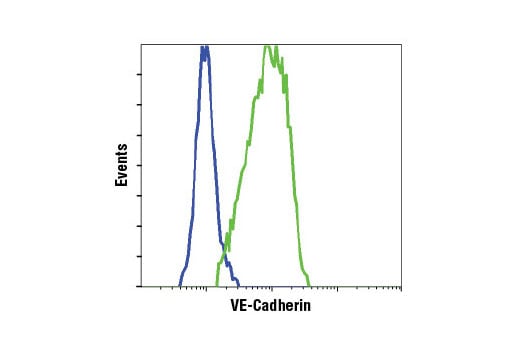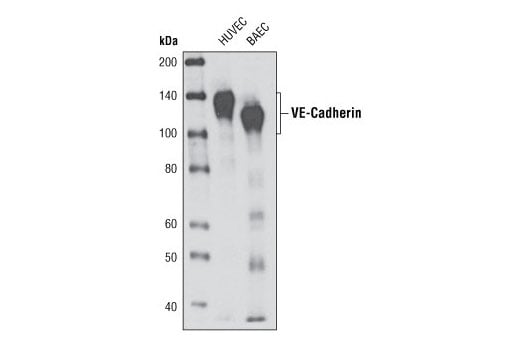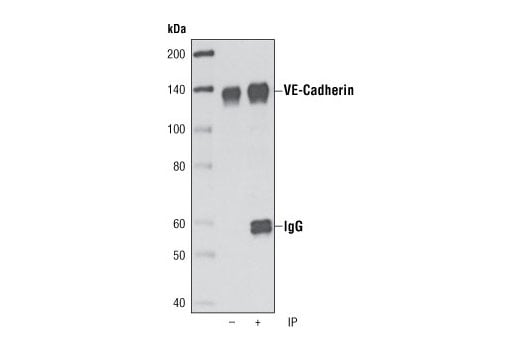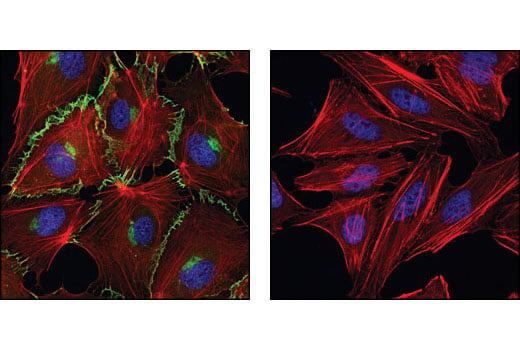 全部商品分类
全部商品分类



Monoclonal antibody is produced by immunizing animals with a synthetic peptide corresponding to residues near the carboxy terminus of human VE-cadherin.


Product Usage Information
| Application | Dilution |
|---|---|
| Western Blotting | 1:1000 |
| Immunoprecipitation | 1:50 |
| Immunofluorescence (Immunocytochemistry) | 1:400 |
| Flow Cytometry (Fixed/Permeabilized) | 1:100 |





Specificity/Sensitivity
Species Reactivity:
Human, Bovine, Pig




Supplied in 10 mM sodium HEPES (pH 7.5), 150 mM NaCl, 100 µg/ml BSA, 50% glycerol and less than 0.02% sodium azide. Store at –20°C. Do not aliquot the antibody.
For a carrier free (BSA and azide free) version of this product see product #78156.


参考图片
Flow cytometric analysis of fixed and permeabilized HeLa cells (blue, negative) and HUVEC cells (green, positive) using VE-Cadherin (D87F2) Rabbit mAb. Anti-rabbit IgG (H+L), F(ab')2 Fragment (Alexa Fluor® 488 Conjugate) #4412 was used as a secondary antibody.
Western blot analysis of extracts from HUVEC and BAEC cells using VE-Cadherin (D87F2) XP® Rabbit mAb.
Immunoprecipitation of VE-caderin from HUVEC cells using VE-Cadherin (D87F2) XP® Rabbit mAb followed by western blot using the same antibody. Lane 1 is 5% input.
Confocal immunofluorescent analysis of HUVE cells (left) and HeLa cells (right) using VE-Cadherin (D87F2) XP® Rabbit mAb (green). Actin filaments have been labeled with DY-554 phalloidin (red). Blue pseudocolor = DRAQ5® #4084 (fluorescent DNA dye).








 用小程序,查商品更便捷
用小程序,查商品更便捷




